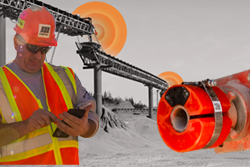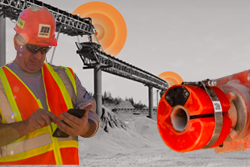By Carlee Spahn on Jul 30, 2021 9:15:00 AM
Before we get into it, there’s one thing you need to know about me. I love HGTV. House Hunters, Property Brothers, Fixer Upper...I can’t get enough. Well, just over a year ago my time to shine finally came. My husband and I bought our first house together. And while we’re no Chip and Joanna Gaines, we gave it our best try.
 The house is a large Victorian built in 1890 so in its 100+ years, it’s seen a thing or two. On the day of closing, this house needed everything. New floors, new walls, new electrical, etc. If you can think of it, it needed to be upgraded. So, we buckled down and got to work. We sanded down all of the painted-over (*shudder*) hardwood floors, patched holes in the 100-year-old plaster walls, and evicted all of the bats that had taken up residence in the attic. Done only with our two hands, we brought this old purple lady into the twenty-first century!
The house is a large Victorian built in 1890 so in its 100+ years, it’s seen a thing or two. On the day of closing, this house needed everything. New floors, new walls, new electrical, etc. If you can think of it, it needed to be upgraded. So, we buckled down and got to work. We sanded down all of the painted-over (*shudder*) hardwood floors, patched holes in the 100-year-old plaster walls, and evicted all of the bats that had taken up residence in the attic. Done only with our two hands, we brought this old purple lady into the twenty-first century!

We now have features in the home that the original owners could have never imagined. We officially have a “smart house.” I love to stay on the cutting edge of technology and when something fun and innovative comes out, I just have to have it. We have an Alexa in every room and she controls everything. From the time my alarm sounds in the morning, she is always there to make sure my day stays on track.
Everything is connected
 The LED strip on the banister turns on automatically at 6:00 AM to light my way down the stairs. The fridge knows to make more ice in the morning so I have plenty of cubes for my iced coffee. Alexa starts talking when I enter the kitchen just in time to tell me the top few news stories and run down my schedule for the day - including all of my upcoming meetings. She knows to feed the cats twice a day from their automatic feeder while I’m at work and she never ever forgets (which I’m sure they appreciate). 🐈 And she's always there to unlock the front door and greet me when I get home.
The LED strip on the banister turns on automatically at 6:00 AM to light my way down the stairs. The fridge knows to make more ice in the morning so I have plenty of cubes for my iced coffee. Alexa starts talking when I enter the kitchen just in time to tell me the top few news stories and run down my schedule for the day - including all of my upcoming meetings. She knows to feed the cats twice a day from their automatic feeder while I’m at work and she never ever forgets (which I’m sure they appreciate). 🐈 And she's always there to unlock the front door and greet me when I get home.
If there’s a light, appliance, or anything that’s connected to electricity in the house, you can bet it’s hooked up to the internet to be made “smart.” At this point, I don’t know if I could live without it. The thought of getting out of bed to change the thermostat all the way downstairs exhausts me, let alone the thought of doing something like climbing a tower to make sure a belt cleaner is properly tensioned.
My Philosophy: if you don’t have to then why would you?
We are living in a time where the future feels like it’s happening right in front of our eyes. If I can control everything about my 1890 Victorian from the comfort of my couch then why should running a plant be any different? It shouldn’t be. And I can tell you that the benefits of implementing this type of technology at a plant-sized scale are much greater than the benefits of making sure there are enough cubes for your iced coffee.
Cleaner, safer, more productive
These three concepts have always been at the core of what Martin Engineering does and while this hasn’t changed, it has certainly evolved. By embracing new technologies and processes, Martin Engineering is not only leading the industry but is revolutionizing the way bulk materials are handled. The newest technology to make its debut is remote monitoring. In just the same way I can check in on my front door from work, you too can check in on a belt cleaner halfway across the plant. Remote monitoring means you can be confident your carryback is being controlled even when you’re not physically there to check on it.
 With the new line of N2® products such as the
With the new line of N2® products such as the  all you have to do is open up your phone and the status of every belt cleaner is available to you at the touch of a button.
all you have to do is open up your phone and the status of every belt cleaner is available to you at the touch of a button.
Wouldn't it be nice to know immediately...
- When a blade change is required
- When to re-tension
- When the blade is not in contact with the belt
- If a substantial change in temperature occurs
By having this information available digitally, you are lowering the risk of putting workers in unsafe situations by reducing the time spent inspecting and maintaining conveyor belt components. Stored energy, working at heights, and accessing confined spaces are just some of the exposures that can be minimized or completely eliminated.
Access to this information isn’t just advantageous for workers at the plant, it can also be accessed from anywhere proving particularly beneficial if your technicians happen to be at the other end of the country. This leads to fewer unnecessary maintenance tasks and more efficient use of everyone's time.
Overall, this means more uptime, less downtime, and better budgeting. When belt cleaners wear at different rates, it’s difficult to know when to call in maintenance or when one needs to be replaced altogether. Smart monitoring enables data to be collected over time to predict when replacements are needed for each conveyor individually.
If you want to know what it’s like to have a smart home, you can ask me but if you want to know what it’s like to have a cleaner, safer, and more productive plant….just ask Chip!



comments